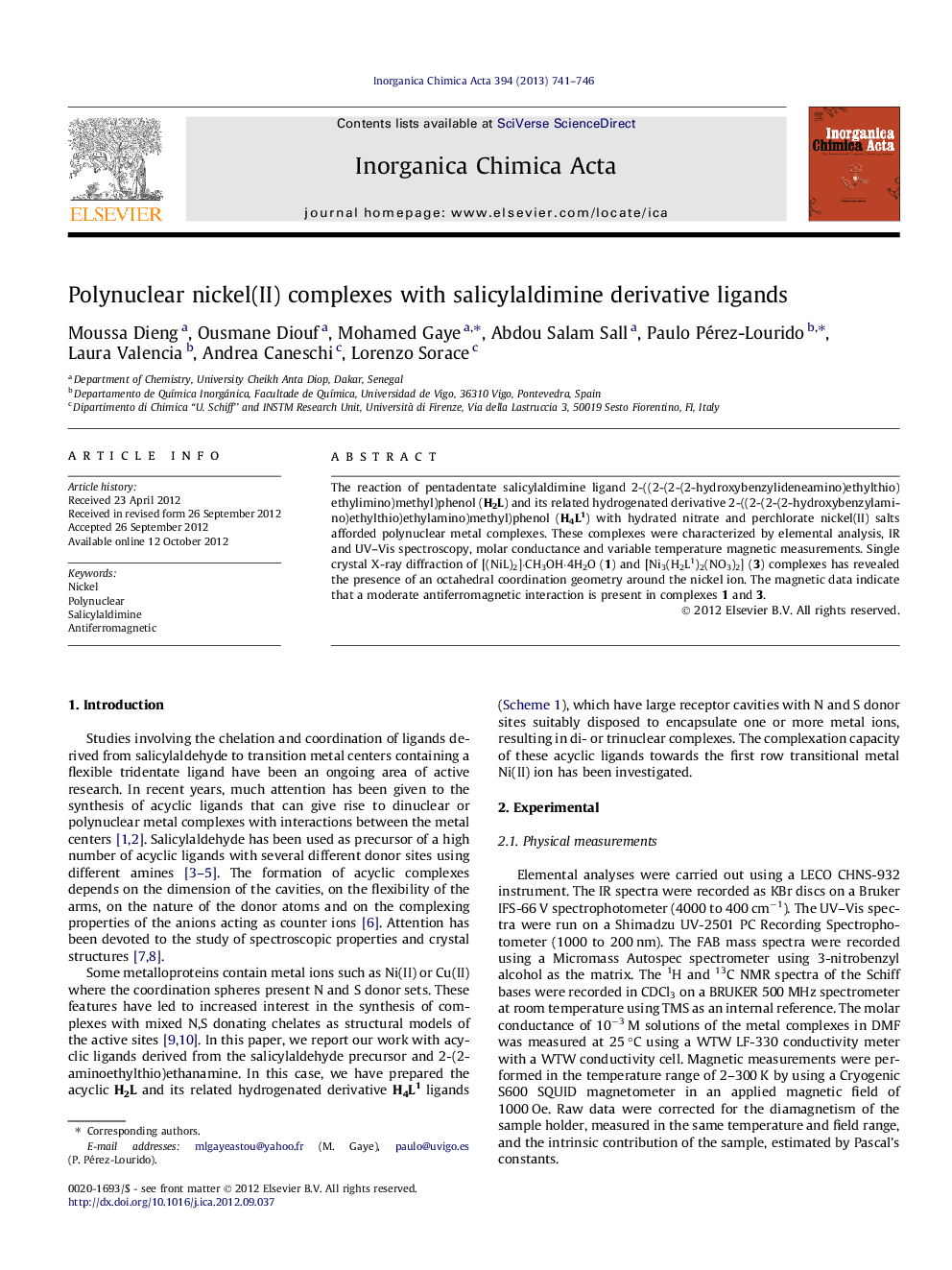| Article ID | Journal | Published Year | Pages | File Type |
|---|---|---|---|---|
| 1310639 | Inorganica Chimica Acta | 2013 | 6 Pages |
The reaction of pentadentate salicylaldimine ligand 2-((2-(2-(2-hydroxybenzylideneamino)ethylthio)ethylimino)methyl)phenol (H2L) and its related hydrogenated derivative 2-((2-(2-(2-hydroxybenzylamino)ethylthio)ethylamino)methyl)phenol (H4L1) with hydrated nitrate and perchlorate nickel(II) salts afforded polynuclear metal complexes. These complexes were characterized by elemental analysis, IR and UV–Vis spectroscopy, molar conductance and variable temperature magnetic measurements. Single crystal X-ray diffraction of [(NiL)2]·CH3OH·4H2O (1) and [Ni3(H2L1)2(NO3)2] (3) complexes has revealed the presence of an octahedral coordination geometry around the nickel ion. The magnetic data indicate that a moderate antiferromagnetic interaction is present in complexes 1 and 3.
Graphical abstractThe reaction of pentadentate salicylaldimine ligand 2-((2-(2-(2-hydroxybenzylideneamino)ethylthio)ethylimino)methyl)phenol (H2L) and its related hydrogenated derivative 2-((2-(2-(2-hydroxybenzylamino)ethylthio)ethylamino)methyl)phenol (H4L1) with hydrated nitrate and perchlorate nickel(II) salts afforded polynuclear metal complexes. These complexes were characterized by elemental analysis, IR and UV–Vis spectroscopy, molar conductance and variable temperature magnetic measurements. Single crystal X-ray diffraction of [(NiL)2]·CH3OH·4H2O (1) and [Ni3(H2L1)2(NO3)2] (3) complexes has revealed the presence of an octahedral coordination geometry around the nickel ion. The magnetic data indicate that a moderate antiferromagnetic interaction is present in the studied complexes 1 and 3.Figure optionsDownload full-size imageDownload as PowerPoint slideHighlights► A pentadentate salicylaldimine acyclic Schiff base and its reduced derivative were prepared. ► Polynuclear Ni(II) phenoxo bridged complexes were obtained from the reaction with those ligands. ► The complexes show the metal ion in a distorted octahedral geometry. ► The magnetic data of complexes indicate that antiferromagnetic coupling occurs via the phenoxo bridge.
